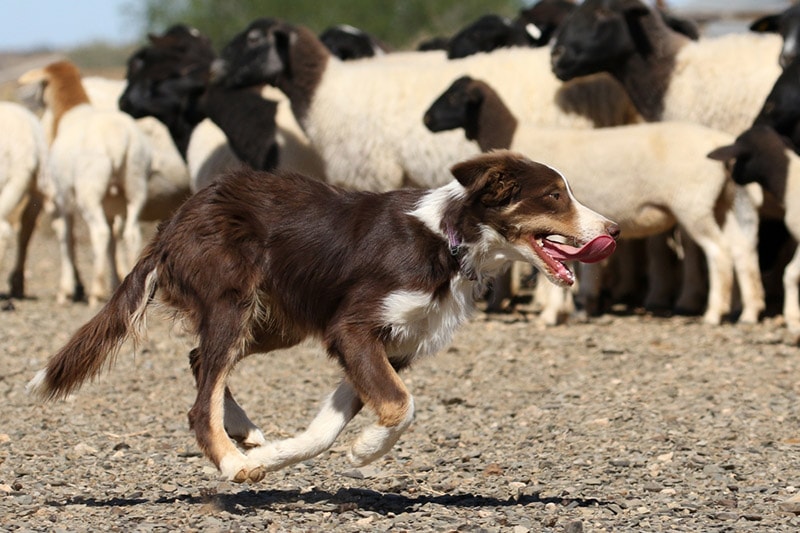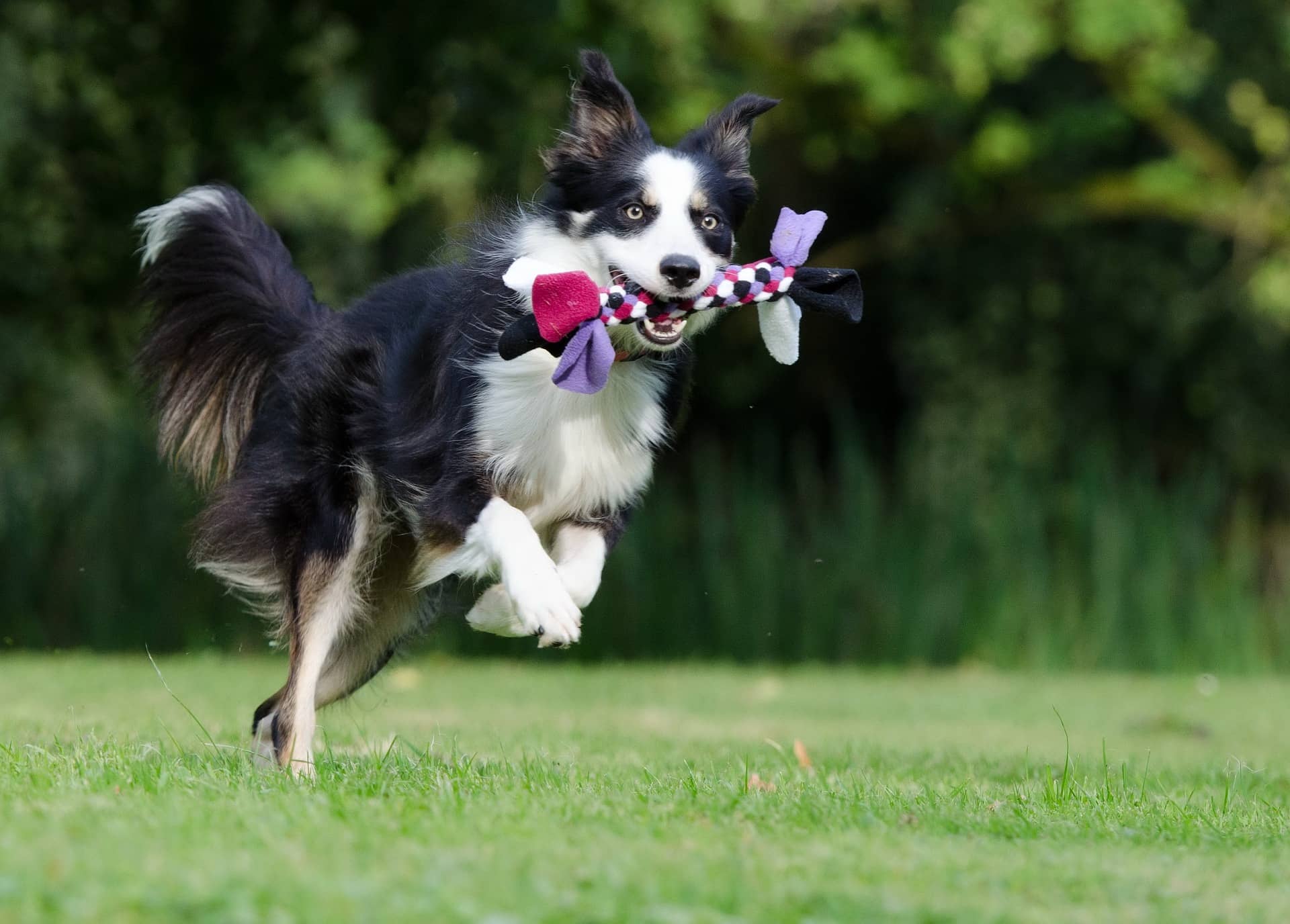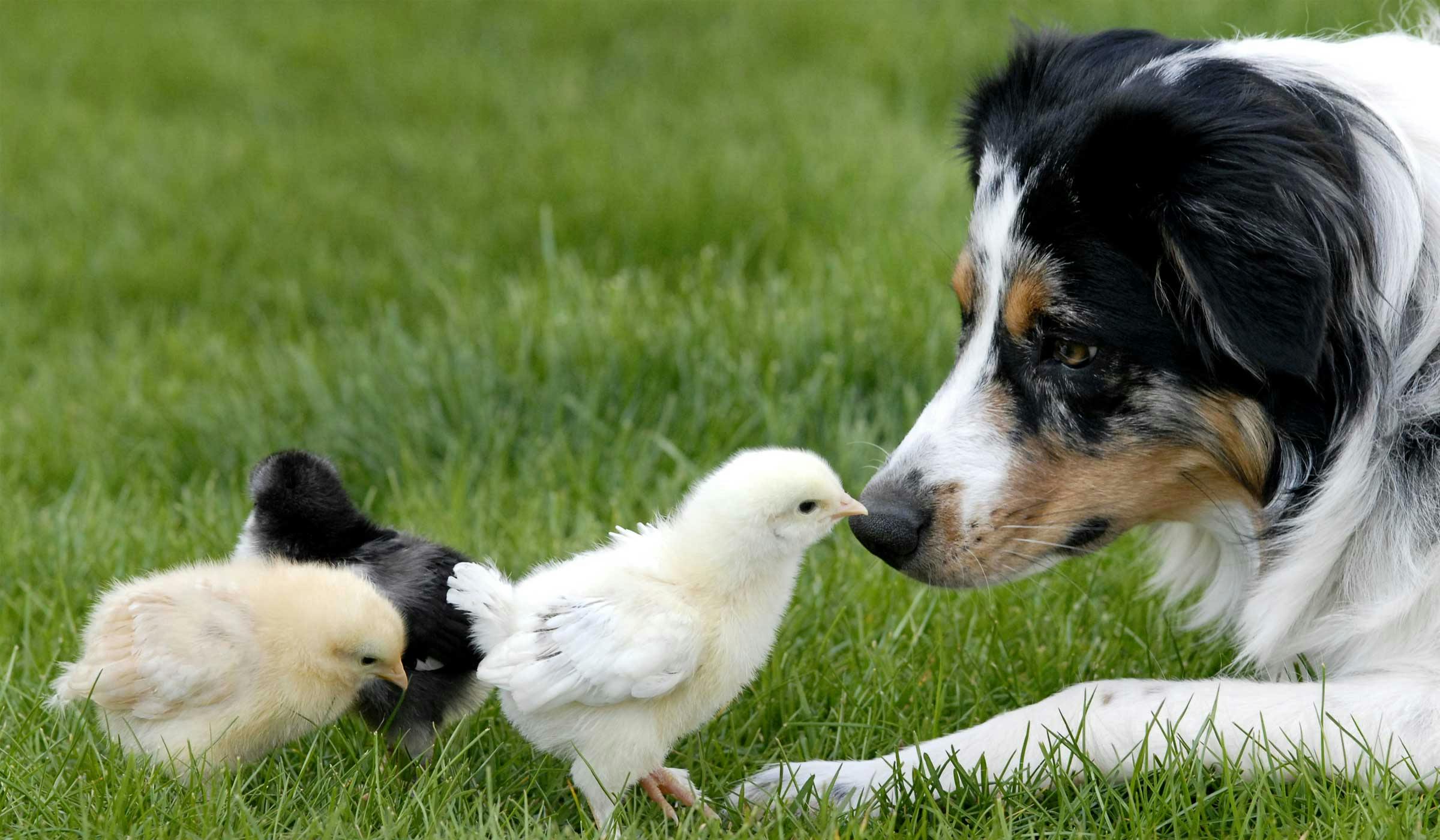So, you’ve got a Border Collie and you’re wondering how to train them for herding. Well, you’re in the right place! Border Collies are known for their incredible herding skills, and with the right training, you can tap into their natural abilities and turn them into top-notch herders. In this article, we’ll walk you through the basics of training Border Collies for herding and give you some tips and tricks to help you and your furry friend succeed.
Training a Border Collie for herding requires patience, consistency, and a deep understanding of their instincts and behaviors. These intelligent dogs have been bred to work closely with livestock, and their natural herding instincts are strong. To begin the training process, it’s important to start with basic obedience commands like sit, stay, and come. Once your Border Collie has a firm grasp of these commands, you can begin introducing them to the world of herding with the help of a professional trainer or experienced herder. It’s important to remember that herding is a complex skill that takes time and practice to master, so be prepared to invest time and effort into your Border Collie’s training. In the next section, we’ll delve deeper into the specific techniques and exercises you can use to train your Border Collie for herding. So, stay tuned!
Understanding Border Collies
Border Collies are highly intelligent and energetic dogs that have been bred for herding livestock. They are known for their exceptional work ethic, agility, and trainability. In order to effectively train a Border Collie for herding, it is important to understand their traits and characteristics, as well as the history of the breed and the importance of their herding instincts.
Traits and Characteristics of Border Collies
Border Collies are medium-sized dogs with a well-proportioned body and a distinctive coat that can come in a variety of colors and patterns. They are known for their intense gaze and focused expression, which is a result of their strong herding instinct. Border Collies have a high energy level and require plenty of mental and physical stimulation to thrive.
The History of Border Collies
Border Collies originated in the border region between Scotland and England, where they were primarily used for herding sheep. They were bred to be intelligent, agile, and capable of working independently. Over the years, the breed has gained recognition for its exceptional herding skills and has become popular not only in working settings but also as beloved companions.
The Importance of Herding Instincts in Border Collies
Herding instincts are inherent in Border Collies and play a vital role in their ability to perform well in herding activities. These instincts drive their natural inclination to chase, gather, and control livestock. It is important to understand and nurture these instincts in order to train a Border Collie effectively for herding.
Preparing for Herding Training
Before starting herding training, it is crucial to create a safe and enclosed training environment. This will help prevent any accidents or escape attempts during the training sessions. Gathering the necessary equipment, such as a herding stick and whistle, is also essential. Additionally, establishing a strong bond and trust with your Border Collie will set a solid foundation for successful training.
Creating a Safe and Enclosed Training Environment
When training a Border Collie for herding, it is important to have a designated training area that is securely fenced. This will prevent the dog from getting distracted or running off during training sessions. Ensuring there are no potential hazards, such as sharp objects or loose wires, will also contribute to a safe training environment.
Gathering the Necessary Equipment
To effectively train a Border Collie for herding, certain equipment is essential. The most commonly used tools include a herding stick and a whistle. The herding stick is used to direct the dog’s attention and movement, while the whistle is an important tool for giving commands and direction.
Establishing a Bond with Your Border Collie
Building a strong bond and trust with your Border Collie is crucial for successful herding training. Spending quality time with your dog, engaging in activities that they enjoy, and providing positive reinforcement are all effective ways to establish a bond. This bond will create a strong foundation for effective communication and teamwork during herding training.

Basic Commands for Herding Training
Before diving into more advanced herding techniques, it is important to establish a solid foundation of basic commands. Teaching your Border Collie commands such as ‘come’, ‘sit’, ‘stay’, and ‘lie down’ will allow for better control and coordination during herding sessions.
Teaching ‘Come’ and Recall
The ‘come’ command is essential for herding training, as it ensures that your Border Collie responds and comes back to you when called. To train this command, start in a distraction-free environment and call your dog’s name followed by the command ‘come’. Use positive reinforcement, such as treats or praise, when your dog responds correctly.
Mastering ‘Sit’ and ‘Stay’ Commands
The ‘sit’ and ‘stay’ commands are important for maintaining control and directing your Border Collie during herding training. To train these commands, start with the ‘sit’ command by luring your dog into a sitting position with a treat. Once they have learned to sit on command, gradually introduce the ‘stay’ command by lengthening the duration of the sit.
Introducing the ‘Lie Down’ Command
The ‘lie down’ command is useful for getting your Border Collie to settle and remain still in certain herding situations. To train this command, start with your dog in a sitting position and hold a treat close to the ground. Slowly move the treat towards the ground, encouraging your dog to lie down. Reinforce the behavior with positive reinforcement.
Building Drive and Focus
Drive and focus are essential qualities for a successful herding dog. Building drive refers to increasing your Border Collie’s motivation and enthusiasm for herding tasks, while focus involves teaching them to pay attention and respond to your commands.
Using Positive Reinforcement Techniques
Positive reinforcement is an effective training method for building drive and focus in Border Collies. By rewarding desired behaviors with treats, praise, or play, you can motivate your dog and encourage them to engage in herding tasks. Use a high-value reward, such as a special treat, for tasks that require extra motivation.
Teaching Border Collies to Focus on You
Building focus starts with teaching your Border Collie to pay attention to you, even in distracting environments. Start in a quiet area and hold a treat close to your face. Use a command, such as ‘watch me’, and wait for your dog to make eye contact with you. Reinforce the behavior with positive reinforcement and gradually increase the distractions.
Increasing Drive and Motivation in Herding Training
To increase drive and motivation in herding training, it is important to make the tasks challenging and rewarding. Gradually introduce more complex herding exercises, such as moving livestock through obstacles or tight spaces. Use positive reinforcement and gradually increase the difficulty level to keep your Border Collie engaged and motivated.

Herding Training Techniques
Once your Border Collie has mastered the basic commands and has developed drive and focus, it is time to move on to more advanced herding training techniques. These techniques involve teaching your dog to follow directions, understand body language and whistle commands, and respond to pressure and release.
Teaching Border Collies to Follow Directions
Following directions is a crucial aspect of herding training. Start by teaching your Border Collie basic directional commands, such as ‘left’ and ‘right’, using visual cues, such as a pointing finger or hand gesture. Gradually introduce more complex commands, such as ‘come by’ and ‘away’, to direct your dog’s movement during herding activities.
Introducing Body Language and Whistle Commands
Body language and whistle commands are important tools for communicating with your Border Collie during herding training. Experiment with different body postures and gestures to signal your dog’s next move. Pair these cues with whistle commands, such as short bursts for left or right directions, to further enhance communication and clarity.
Understanding the Use of Pressure and Release
Pressure and release is a fundamental concept in herding training. Border Collies are sensitive to pressure, both physical and verbal, and learn to respond to its release. Apply light pressure or use verbal cues to guide your dog’s movement, and release the pressure or praise them for correct responses. This teaches them to associate certain behaviors with positive outcomes and encourages cooperation.
Starting with Basic Movements
Once your Border Collie has a solid understanding of basic commands and herding techniques, it is time to start practicing basic movements that are fundamental to herding tasks. These movements include walking on and off leash, circle work, and responding to verbal cues.
Teaching Border Collies to Walk On and Off Leash
Walking on and off leash is essential for successful herding training. Start in a low-distraction environment and train your Border Collie to walk calmly beside you. Gradually introduce distractions and practice the behavior both on and off leash to ensure reliability in different situations.
Introducing Circle Work and Directional Commands
Circle work is a fundamental movement in herding, as it allows your Border Collie to control the movement of livestock in a circular pattern. Start by training your dog to move in a circle around you, using directional commands to guide their movement. Gradually increase the difficulty by introducing obstacles or livestock into the exercise.
Training Border Collies to Respond to Verbal Cues
Verbal cues are important for directing your Border Collie during herding activities. Start by associating specific verbal cues, such as ‘walk up’, ‘get back’, or ‘steady’, with the corresponding movements or commands. Practice these cues in different contexts and reinforce them with positive reinforcement to ensure reliability.

Progressing to Advanced Training
Once your Border Collie has mastered the basic movements and commands, it is time to progress to more advanced training. This includes teaching them to pen and gather livestock, introducing boundary work and flank commands, and building trust and confidence in challenging situations.
Teaching Border Collies to Pen and Gather Livestock
Penning and gathering livestock are key tasks in herding. To train your Border Collie for this, start with small and controlled groups of livestock and gradually increase the challenge. Teach your dog the ‘pen’ command to direct them to gather the livestock into a designated area.
Introducing Boundary Work and Flank Commands
Boundary work involves teaching your Border Collie to work along the edges or boundaries of the livestock. Start by setting up a boundary using temporary fencing or other visual cues. Teach your dog to stay within the boundary and respond to flank commands to control the movement of the livestock along the boundary.
Building Trust and Confidence in Challenging Situations
Herding can be a challenging task for the dog and the handler. It is important to build trust and confidence in your Border Collie by gradually exposing them to different environments, livestock, and situations. Use positive reinforcement and patience to help your dog overcome any fears or anxieties and develop confidence in their abilities.
Herding Trials and Competitions
Participating in herding trials and competitions can be a rewarding experience for both you and your Border Collie. These events allow you to showcase your dog’s herding skills and compete against other talented teams. Proper preparation, understanding the different trials and classes, and following tips for success are key to achieving a positive competition experience.
Preparing for Herding Trials
Before entering a herding trial, it is important to ensure your Border Collie is properly trained and prepared. Practice the required tasks and exercises specific to the trial and gradually increase the difficulty level. Familiarize yourself with the trial rules and regulations to ensure compliance and fairness.
Understanding the Different Trials and Classes
Herding trials can vary in terms of difficulty and the types of livestock involved. Familiarize yourself with the different trial classes, such as nursery, open, or advanced, and understand the specific requirements for each class. This will help you choose the appropriate level for your Border Collie and set realistic goals.
Tips for Successful Competition Participation
Participating in herding competitions can be nerve-wracking, but with proper preparation and a positive mindset, you can set yourself up for success. Practice in different environments and with various livestock to expose your Border Collie to different challenges. Focus on clear communication and maintaining a calm and assertive demeanor during the competition.

Addressing Challenges and Behavioral Issues
Training a Border Collie for herding can present certain challenges and behavioral issues. It is important to address them promptly and effectively to ensure a harmonious working relationship with your dog and safe herding practices.
Dealing with Herding Instinct Challenges
Border Collies have a strong herding instinct, which can sometimes lead to certain challenges such as chasing or nipping at people or animals. To address these challenges, it is important to redirect and channel their herding instincts in appropriate ways through training and positive reinforcement.
Correcting Unwanted Behaviors
Unwanted behaviors, such as pulling on the leash or not listening to commands, can hinder effective herding training. Consistency and positive reinforcement are key in correcting these behaviors. Redirect attention, use firm and clear commands, and reinforce desired behaviors to discourage and replace unwanted ones.
Training Border Collies to Be Respectful with Livestock
Respect towards livestock is crucial for successful herding. Teach your Border Collie to work calmly and quietly around livestock, without exhibiting aggressive or predatory behavior. Provide opportunities for controlled exposure to livestock and reinforce positive behaviors, such as staying calm and maintaining a safe distance.
Continuing Education and Learning
Herding training is an ongoing process that requires continuous education and learning for both the dog and the handler. Exploring advanced herding techniques and styles, attending workshops and seminars, and engaging in continuing education opportunities are all valuable for furthering your herding skills.
Exploring Advanced Herding Techniques and Styles
There are various advanced herding techniques and styles that can be explored to further enhance your Border Collie’s herding abilities. This may include learning different commands, such as ‘balance’ or ‘shed’, or exploring different types of livestock and working in different environments. Seek guidance from experienced trainers or attend specialized workshops to learn and refine these techniques.
Attending Workshops and Seminars
Workshops and seminars provide valuable opportunities to learn from experienced herding trainers and handlers. These events often cover specific topics or techniques related to herding, and provide hands-on learning experiences. Attend relevant workshops and seminars in your area to expand your knowledge and gain new insights.
Engaging in Continuing Education for Handlers
Continuing education for handlers is just as important as training for Border Collies. Stay up-to-date with the latest research, techniques, and advancements in herding training by reading books, articles, and online resources. Join online forums or communities to connect with like-minded individuals and learn from their experiences.

Health and Care for Working Border Collies
Proper health and care are essential for working Border Collies. Maintaining a balanced nutrition and exercise routine, regular health check-ups and vaccinations, and preventing and managing common injuries are key to ensuring the overall well-being of your herding companion.
Maintaining Proper Nutrition and Exercise
Proper nutrition and exercise are crucial for the physical and mental well-being of working Border Collies. Consult with a veterinarian to determine the appropriate diet and portion sizes for your dog based on their age, activity level, and overall health. Provide regular exercise, such as long walks, jogging, or agility training, to keep them physically and mentally stimulated.
Regular Health Check-ups and Vaccinations
Regular health check-ups and vaccinations are important for maintaining the health and preventing the spread of diseases in working Border Collies. Schedule routine visits with a veterinarian to ensure your dog is up to date with vaccinations, and to monitor their overall health and well-being.
Preventing and Managing Common Injuries
Working Border Collies may be prone to certain injuries or health issues due to the physical demands of herding. Take precautions to prevent injuries by ensuring your dog warms up before intense exercises and providing a safe and supportive working environment. If an injury occurs, consult a veterinarian for proper diagnosis and treatment.
Working with Professional Herding Trainers
Working with a professional herding trainer can greatly enhance your Border Collie’s herding skills and your overall training experience. Finding a reputable trainer, understanding different training approaches, and utilizing professional guidance and expertise can help take your herding training to the next level.
Finding Reputable Herding Trainers
When searching for a herding trainer, it is important to find someone with experience and expertise in working with Border Collies. Seek recommendations from other herding enthusiasts or local herding organizations. Interview potential trainers to ensure they have a good understanding of the breed and can tailor their training methods to suit your specific goals.
Understanding Different Training Approaches
Different trainers may utilize various training approaches and techniques. Some trainers may focus on positive reinforcement, while others may incorporate more traditional or balanced methods. Understand different training approaches and choose a trainer whose methods align with your training philosophy and goals.
Utilizing Professional Guidance and Expertise
Professional herding trainers can provide valuable guidance and expertise throughout your training journey. They can help assess your Border Collie’s abilities, identify areas for improvement, and provide tailored training plans. Utilize their expertise to refine your training techniques and achieve better results.
Creating a Well-rounded Border Collie
While herding training is an important aspect of a Border Collie’s life, it is equally important to create a well-rounded dog by balancing herding training with other activities, building a strong bond and relationship, and providing mental stimulation and enrichment.
Balancing Herding Training with Other Activities
Border Collies are highly intelligent and versatile dogs that thrive on mental and physical stimulation. Balance herding training with other activities such as agility, obedience, or trick training to provide variety and prevent burnout. This will help keep your Border Collie engaged, happy, and mentally fulfilled.
Building a Strong Bond and Relationship
Building a strong bond and relationship with your Border Collie goes beyond training. Spend quality time with your dog by engaging in activities they enjoy, such as daily walks, playtime, or simply cuddling. Positive reinforcement and consistent training will strengthen the trust and connection between you and your dog.
Providing Mental Stimulation and Enrichment
Border Collies are known for their high intelligence and problem-solving abilities. To keep their minds sharp, provide mental stimulation and enrichment activities. This can include puzzle toys, interactive feeding devices, scent work, or learning new tricks. Mental stimulation will prevent boredom and help satisfy their need for mental challenges.
Conclusion
Training a Border Collie for herding requires patience, consistency, and a deep understanding of the breed’s characteristics and instincts. By following the steps outlined in this guide, you can effectively train your Border Collie for herding and develop a strong partnership based on trust, communication, and mutual respect. Remember to always prioritize your dog’s well-being and provide a balanced lifestyle that includes both herding training and other fulfilling activities. With dedication and continued learning, you and your Border Collie can excel in the exciting world of herding.